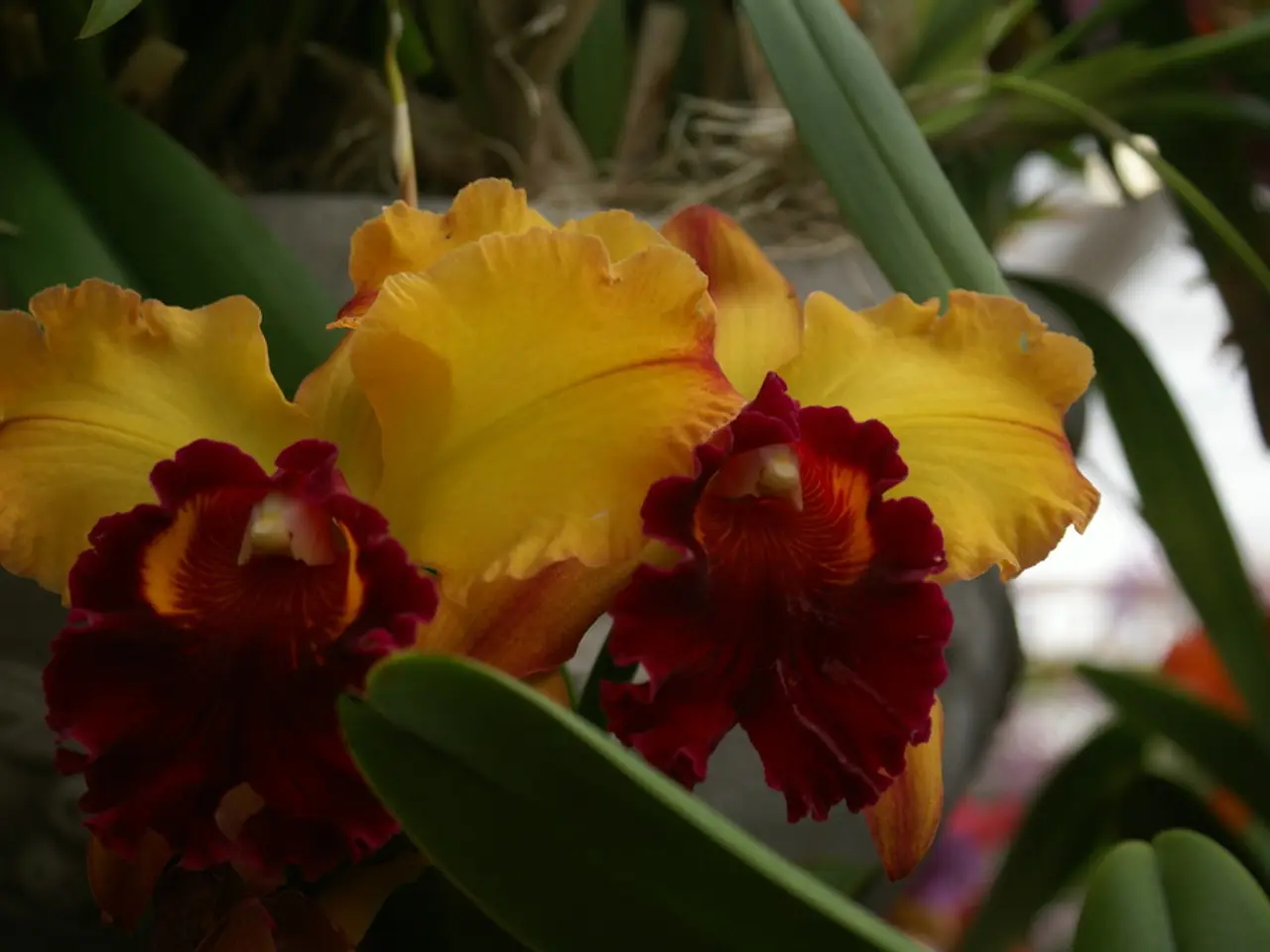A Comprehensive Manual for Cultivating Daffodils!
In the heart of spring, few flowers bring as much joy as daffodils. These hardy, fragrant blooms can brighten up any space, whether in a garden or a container. Here's a step-by-step guide on how to care for and maintain daffodils in pots.
Daffodils, scientifically known as Narcissus, are known for their versatility. They can grow solitary or double, and appear either alone or in clusters on a stalk. These flowers come in a variety of colours and shapes, ranging from the traditional yellow to white, pink, and salmon. Smaller varieties, such as 'Tete-a-Tete', thrive particularly well in containers.
To start, choose a clean, well-draining potting mix and a container with drainage holes. This will help prevent waterlogging and ensure proper drainage. Plant the daffodil bulbs tip side up at the recommended depth, placing them closely together (about half an inch apart), then cover with soil and water thoroughly. The container should be deep enough to allow root growth but shallow enough to keep the bulbs dry. Adding a layer of pebbles or marbles at the bottom can further aid drainage.
Place the container in a protected outdoor spot where the bulbs can receive the necessary cold period essential for flower development. If temperatures drop below freezing (28 to 30°F), move the pots temporarily indoors to prevent damage. When green shoots appear, move pots into bright light and begin fertilizing with a slow-release fertilizer once blooms start.
During the growing season, water regularly to keep the soil moist but not soggy. Containers dry out faster than garden beds, so in hot weather, watering may be needed once or twice a day, especially if pots are in full sun or made from porous materials like terra cotta. After flowering, allow the foliage to die back naturally to replenish bulb energy. During dormancy, water minimally, only when new growth begins in fall.
If desired, bulbs can remain in the container year-round or be removed and replanted outdoors in the fall; either way, minimal care during dormancy is needed.
Remember these key container gardening tips for daffodils:
- Use a pot with drainage holes and well-draining soil.
- Plant bulbs tip up, closely spaced, at recommended depth.
- Provide a cold period outdoors but protect from freezing.
- Water regularly; increase frequency in hot weather.
- Fertilize with slow-release fertilizer once shoots appear and again at bloom.
- Allow foliage to die back naturally post-bloom to sustain bulb health.
Following these guidelines supports healthy blooms and keeps daffodils thriving year after year in containers. Moreover, the pleasant aroma of daffodils contributes to their popularity, making them an ideal choice for balconies and container gardening. So, embrace the spring season with these vibrant, resilient, and fragrant flowers!
- To ensure a healthy growth of daffodils in containers, use a potting mix that is well-draining and contains drainage holes in the container.
- When planting daffodil bulbs in pots, place them tip side up at the recommended depth, ensuring they are spaced about half an inch apart.
- Maintaining the right environment is crucial for daffodils - provide a cold period outdoors, protect from freezing temperatures but move pots indoors when necessary, water regularly, and fertilize with slow-release fertilizer just before shoots appear and during the blooming phase.
- For a harmonious home-and-garden lifestyle, consider adding daffodils to your balconies or container garden, as they thrive in such environments, contribute to a pleasant aroma, and can be left in containers year-round or replanted outdoors in the fall.





